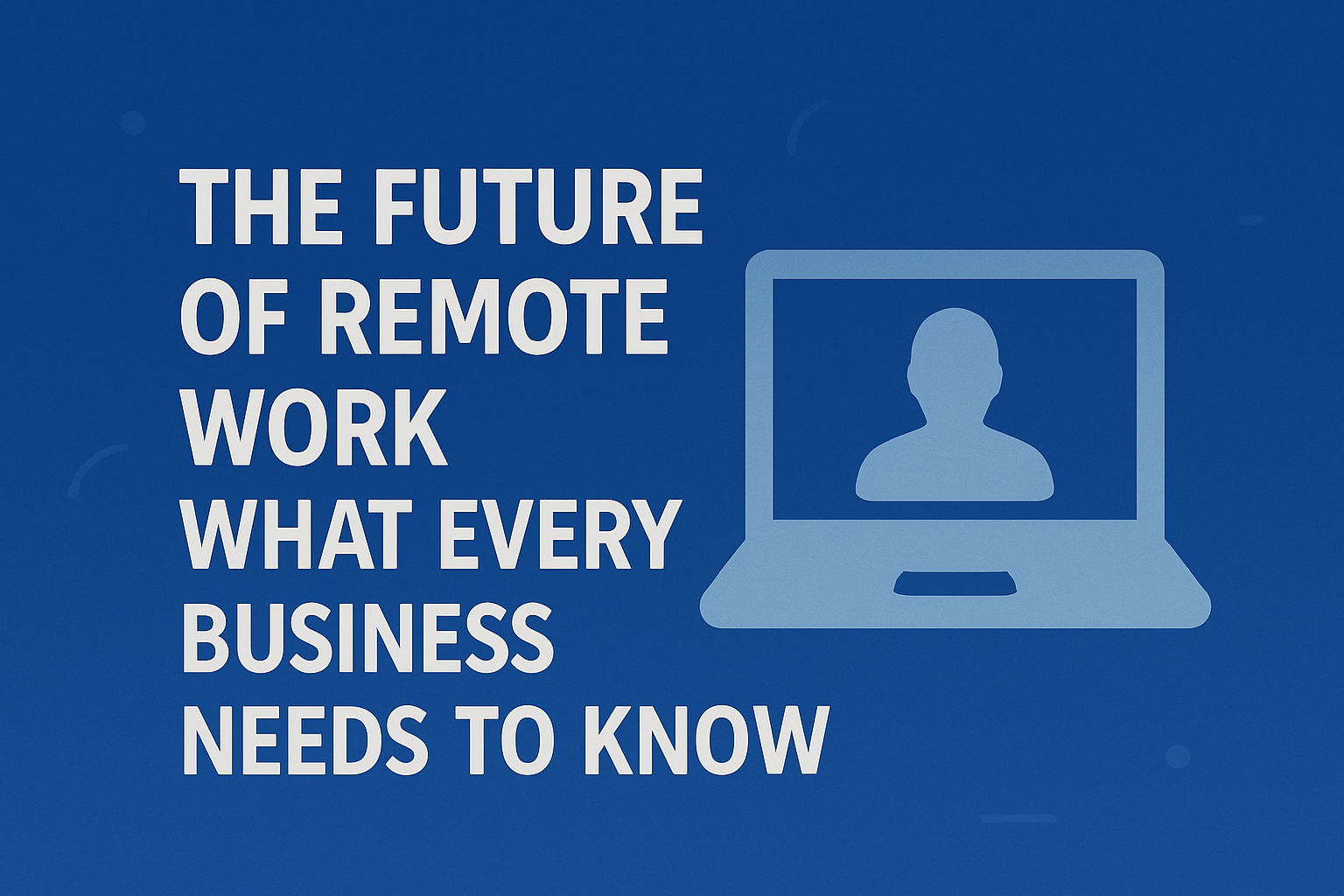Introduction
Remote work is no longer a temporary solution — it’s a fundamental shift in how businesses operate worldwide. What started as a necessity during global disruptions has evolved into a strategic advantage for companies embracing flexibility, digital transformation, and a global talent pool.
In 2025, the future of remote work is being defined by innovation, changing workforce expectations, and business adaptation. Here's what every business leader and entrepreneur needs to know to thrive in this new era.
1. 🏢 Hybrid Work Models Are the New Normal
Full-time remote work isn’t the only option on the table. In 2025, hybrid models — blending remote and in-office work — are the preferred choice for many companies. These flexible arrangements allow businesses to balance productivity, collaboration, and employee satisfaction, offering the best of both worlds.
2. 🌎 Global Talent Access is Transforming Hiring
Remote work has eliminated geographic barriers, enabling businesses to hire top talent from anywhere in the world. This global talent pool gives companies access to specialized skills, diverse perspectives, and cost-effective solutions, changing the way recruitment and team building happen in 2025.
3. 🛠️ Investment in Remote Collaboration Tools Is Essential
Seamless collaboration is key to successful remote teams. Businesses are investing in advanced tools — from project management software and video conferencing platforms to virtual whiteboards and real-time collaboration apps — ensuring teams stay connected, productive, and aligned regardless of location.
4. 🔒 Focus on Cybersecurity and Data Protection
With remote work comes increased cybersecurity risks. In 2025, businesses must prioritize secure networks, data encryption, multi-factor authentication, and employee training on cybersecurity best practices to protect sensitive information and maintain client trust.
5. 💖 Employee Well-being and Mental Health Matter More Than Ever
Remote work can blur the lines between professional and personal life. Forward-thinking companies are implementing wellness programs, flexible schedules, and mental health support initiatives to promote work-life balance and prevent burnout among remote employees.
6. 🎯 Outcome-Based Performance Over Time Tracking
In a remote environment, micromanagement is counterproductive. Successful businesses are shifting to outcome-based performance metrics — focusing on results rather than hours worked — encouraging autonomy, accountability, and a culture of trust within remote teams.
7. 🚀 Remote Work Technology is Rapidly Evolving
Emerging technologies like AI-driven productivity tools, virtual reality (VR) collaboration, and smart workspace apps are redefining how remote teams operate. Businesses that embrace these innovations can enhance communication, streamline workflows, and foster stronger virtual team dynamics.
8. 🤝 Leadership and Management Styles Must Adapt
Leading remote teams requires different skills compared to managing in-office staff. Business leaders in 2025 are focusing on clear communication, empathy, cultural sensitivity, and digital fluency to build strong, motivated, and high-performing remote teams.
9. 💰 Cost Savings and Business Scalability
Remote work allows businesses to reduce overhead costs — from office space to utilities. These savings enable companies to invest in growth, technology, and talent development, making remote work a strategic advantage for scaling operations sustainably.
10. 📜 Compliance, Legal, and Tax Considerations
Operating with a remote workforce, especially internationally, comes with legal complexities. Businesses need to stay informed on labor laws, tax regulations, and compliance requirements in different regions to avoid legal risks and ensure smooth remote operations.
Final Thoughts
The future of remote work is here — and it’s reshaping business as we know it. Companies that adapt, invest in the right tools, prioritize their people, and embrace a global mindset will lead in this new era of work.
Remote work isn’t just a trend — it’s a strategic opportunity for growth, innovation, and lasting success in 2025 and beyond.
